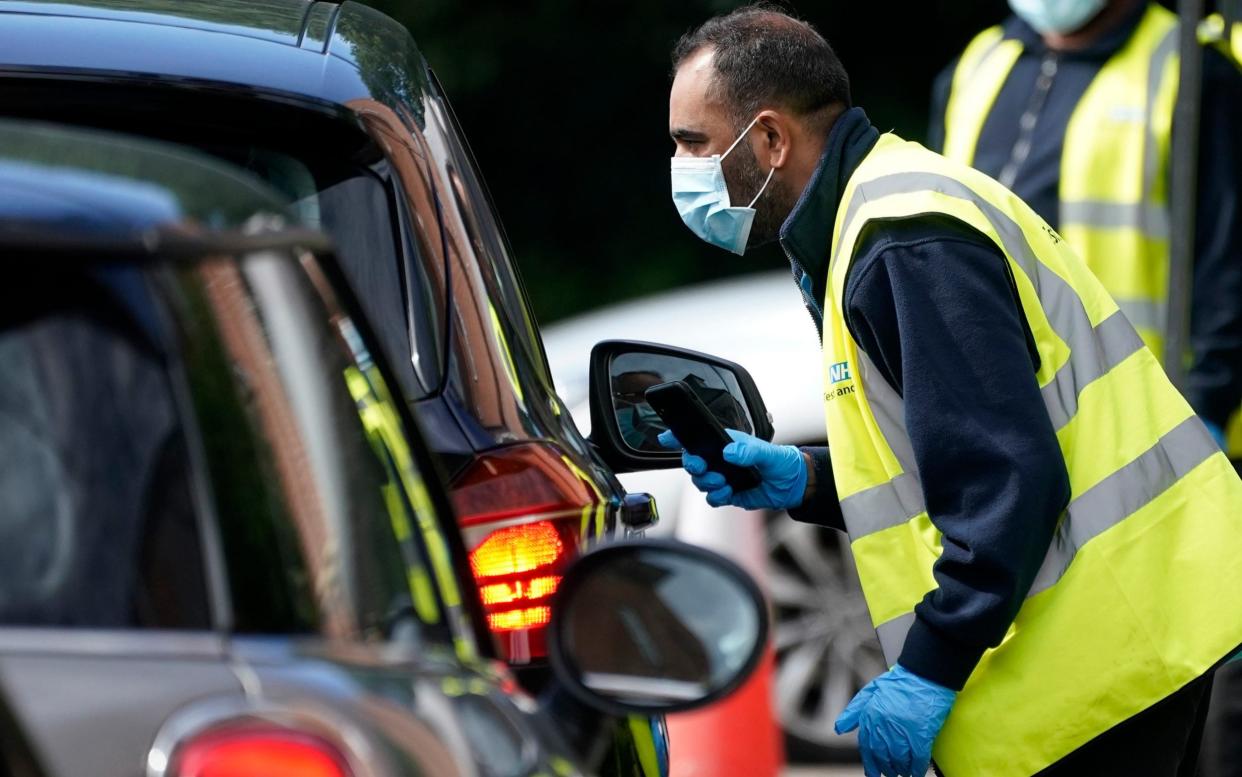Contact tracers to knock on doors as local authorities given more control


The failing test and trace system will be scaled back under plans to replace thousands of call centre workers with council staff knocking on doors.
The major overhaul of the system follows warnings that it is now reaching less than half of contacts of those who test positive for coronavirus. On average, those working for call centres are reaching just one case a month, research shows.
Councils have warned that many of those being called reject attempts to contact them because they assume the unfamiliar "0300" number is a cold caller. There is also concern that translation services have not been made available to those for whom English is not their first language.
Those working for the call centres, run by Serco and Sitel, have said the job was akin to being "paid to watch Netflix". Under the overhaul, around 6,000 of the 18,000 call handlers will be axed.
Instead, councils will be encouraged to send their own workers out to chase up the contacts of infected cases who have failed to respond to phone calls.
The changes follow warnings that the safe reopening of schools next month depends on improving the performance of test and trace.
Research by the Independent Sage group of scientists suggests that the test and trace workforce of 25,000 staff – which includes around 7,000 clinical case workers and health protection staff – reached fewer than 52,000 close contacts of coronavirus cases in two months.
Under the overhauled programme, council teams can track down anyone who cannot be reached by the national system after 48 hours to tell them to self-isolate. Every council will also be told they can have "dedicated ring-fenced teams" from the national service to help with local contact tracing.
Councils in areas with some of the highest infection rates had already taken matters into their own hands amid concern that the national system was failing to stop the spread of the virus.
Last week, Blackburn with Darwen (see video below) followed Sandwell in sending out its own staff amid frustration at failings in the national system.
Leicester and Luton also tried similar approaches to engage with those who are not responding to calls.
Dido Harding, the chair of NHS Test and Trace, said on Monday that the moves followed "successful trials in a small number of local areas".
But last week Dominic Harrison, the director of public health in Blackburn with Darwen, suggested the council had become frustrated with the national system. He said: "We are developing our own system. The national system is simply not tracing enough cases and contacts fast enough."
Earlier this month, Sandwell public health director Lisa McNally said the council was contacting cases as soon as they came in "rather than waiting for Test and Trace to fail to reach them".
Last week, a study suggested that reopening schools without an improvement in the reach of test and trace could cause a second coronavirus wave more than twice the size of Britain's first peak.
The study by University College London and the London School of Hygiene and Tropical Medicine simulated how the disease might spread (see graphic below) when schools open in September.
It found that if test and trace was more successful, so that 68 per cent of contacts of positive cases were traced, then the spread could be held in check.
Since then, test and trace's performance has deteriorated further to reach just 46 per cent of contacts in the week ending July 29.
The Department of Health and Social Care said the new approach was a "partnership" with Public Health England and local authorities.
Baroness Harding said: "NHS Test and Trace is one of the largest contact tracing and testing systems anywhere in the world and was built rapidly, drawing on the UK's existing health protection networks, to stop the spread of coronavirus.
"At the height of the pandemic, we ensured the system had extra capacity in place to cope with potential peaks in the virus.
"We have always been clear that NHS Test and Trace must be local by default and that we do not operate alone – we work with and through partners across the country.
"As we learn more about the spread of the disease, we are able to move to our planned next step and become even more effective in tackling the virus."
The shadow health minister, Justin Madders, said: "Labour has been calling for a locally-led contact tracing system for months – it's welcome that local authorities are now finally being given additional support to tackle the virus in their areas.
"But it's clear Boris Johnson's £10 billion centralised contact tracing system is nowhere near 'world beating', as he claims, and the system is unable to fight local outbreaks successfully."
Keith Neal, emeritus professor in the epidemiology of infectious diseases at the University of Nottingham, said: "The biggest issue has been that 20-25 per cent of cases have not been contactable. Allowing local authorities to chase up will ensure more are contacted.
"Visiting houses will help, but there is no mention as to what they will do if they are not isolating for 10 days as they should be."
Under the test and trace programme, call handlers aim to make contact with all infected people and all the contacts they have passed on in order to advise them to self-isolate. If they cannot do so after 10 calls, they are advised to move on to the next case.
In total, fewer than four in five of those who test positive are reached by contact tracers, of whom less than four in five pass on contacts. And of those, less than three-quarters of contacts are reached, equating to overall coverage of 46 per cent.

 Yahoo News
Yahoo News 
